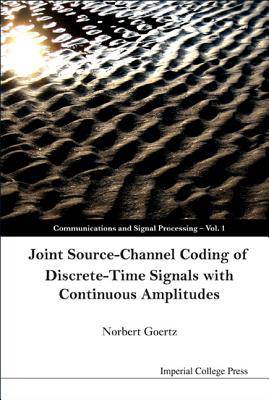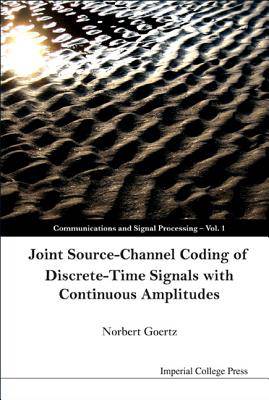
Je cadeautjes zeker op tijd in huis hebben voor de feestdagen? Kom langs in onze winkels en vind het perfecte geschenk!
- Afhalen na 1 uur in een winkel met voorraad
- Gratis thuislevering in België vanaf € 30
- Ruim aanbod met 7 miljoen producten
Je cadeautjes zeker op tijd in huis hebben voor de feestdagen? Kom langs in onze winkels en vind het perfecte geschenk!
- Afhalen na 1 uur in een winkel met voorraad
- Gratis thuislevering in België vanaf € 30
- Ruim aanbod met 7 miljoen producten
Zoeken
Joint Source-Channel Coding of Discrete-Time Signals with Continuous Amplitudes
Norbert Goertz
€ 136,45
+ 272 punten
Omschrijving
This book provides the first comprehensive and easy-to-read discussion of joint source-channel encoding and decoding for source signals with continuous amplitudes. It is a state-of-the-art presentation of this exciting, thriving field of research, making pioneering contributions to the new concept of source-adaptive modulation.The book starts with the basic theory and the motivation for a joint realization of source and channel coding. Specialized chapters deal with practically relevant scenarios such as iterative source-channel decoding and its optimization for a given encoder, and also improved encoder designs by channel-adaptive quantization or source-adaptive modulation.Although Information Theory is not the main topic of the book -- in fact, the concept of joint source-channel coding is contradictory to the classical system design motivated by a questionable practical interpretation of the separation theorem -- this theory still provides the ultimate performance limits for any practical system, whether it uses joint source-channel coding or not. Therefore, the theoretical limits are presented in a self-contained appendix, which is a useful reference also for those not directly interested in the main topic of this book.
Specificaties
Betrokkenen
- Auteur(s):
- Uitgeverij:
Inhoud
- Aantal bladzijden:
- 208
- Taal:
- Engels
- Reeks:
- Reeksnummer:
- nr. 1
Eigenschappen
- Productcode (EAN):
- 9781860948459
- Verschijningsdatum:
- 24/09/2007
- Uitvoering:
- Hardcover
- Formaat:
- Genaaid
- Afmetingen:
- 155 mm x 234 mm
- Gewicht:
- 498 g

Alleen bij Standaard Boekhandel
+ 272 punten op je klantenkaart van Standaard Boekhandel
Beoordelingen
We publiceren alleen reviews die voldoen aan de voorwaarden voor reviews. Bekijk onze voorwaarden voor reviews.









